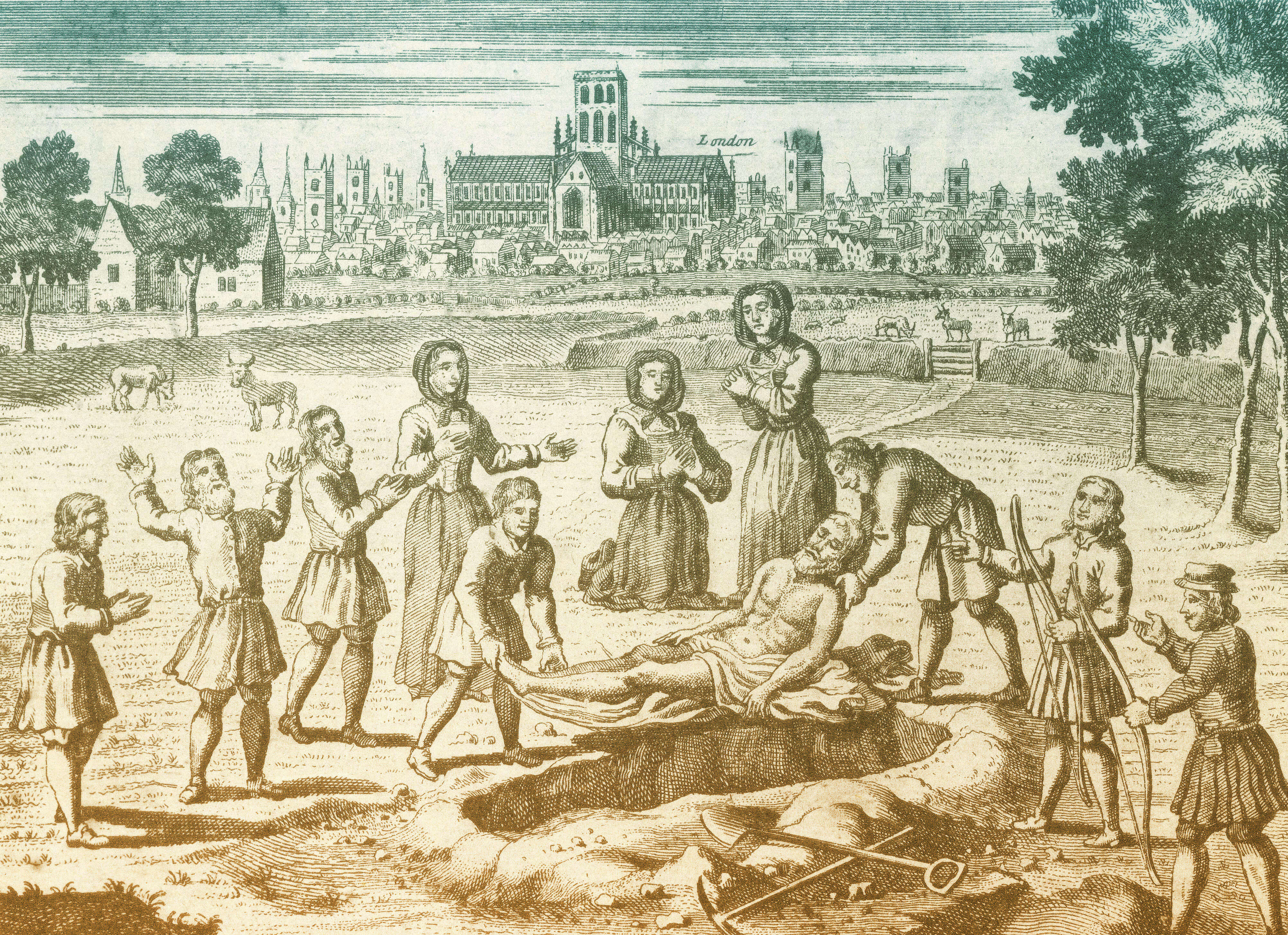During the Great Plague of 1665, which killed about one in six Londoners, the dead were buried outside the city walls, usually attended by armed law enforcement officials—in this case, longbowmen.
We are living world history in these troubling times. In what may come to be called the “Age of Coronavirus,” the entire world in the first half of the year 2020 is suffering together through a severe pandemic. Historically speaking, it is too soon to say what the ultimate outcome will be. One hopes the predictions of worst-case scenarios will be wrong. We have many people and institutions to thank that it is highly unlikely the COVID-19 pandemic will prove to be among history’s deadliest. That said, the current pandemic is unlike any before it in terms of the reaction of governments to it. Countries have responded with economic shutdowns and social lockdowns that are resulting in disruptions not seen even during the worldwide depression of the 1930s.
The global death toll from COVID-19, which topped 40,000 at the end of March, is tragic and shocking in its rapid rise. But loss of life is not projected to be anywhere near that of the Black Death that visited a horrific depopulation on medieval Europe. It will not come close to the decimation of indigenous people of the Americas due to their lack of immunity to European germs. Nor, hopefully, will as many die from this novel virus as from the “Spanish flu” of a century ago. These facts provide no consolation for the present distress, just a sense of historical context.
The epidemics often compared to COVID-19 are those of the last few decades: Ebola in 2013–14, H1N1/swine flu in 2009–10, and SARS in 2002–3. The previous century witnessed other significant epidemics:
- HIV/AIDS, began in 1981 and still ongoing (global deaths: ~ 35 million)
- Hong Kong flu, 1968 (global deaths: > 1 million)
- Asian flu, 1957–58 (global deaths: > 1 million)
- “Spanish” flu, 1918–19 (global deaths: ~ 50 million)
Before the twentieth century, the history of epidemics in the modern world included:
- Russian Flu (1889), spread from Siberia and Kazakhstan (deaths: 360,000)
- Fiji Measles Pandemic (1875)
- Third Plague Pandemic (1855), began in China (deaths: ~ 15 million)
- First Cholera Pandemic (1817), spread from Russia (deaths: millions)
- Great Plague of London (1665)
- smallpox, measles, and bubonic plague (1500s–1600s), associated with the “Columbian Exchange” in Central, South, and North America (deaths: ~ 56 million)
- Black Death, or bubonic plague (mid-1300s), originated in China, was carried to Sicily, then devastated Europe (deaths: 75–200 million)
The present pandemic will likely be historic in many ways beyond the obvious fatal consequences—ways we can only glimpse now. When shelter-in-place orders are finally lifted, the routines of work, school, and social interaction will resume. But even when things “go back to normal,” it will be a new normal.
Image credit: © Chris Aubrey/Alamy
Related Links:
- Covid-19: The History of Pandemics
A comprehensive overview of the current pandemic in historical context.
(Source: BBC, March 25, 2020) - Pandemics That Changed History
Humanity has been here before. Follow this timeline of the worst pandemics in history—both modern and ancient.
(Source: History.com, updated March 27, 2020) - Photos from a Century of Epidemics
A photo gallery with brief historical sketches of 100 years of epidemics since the 1918–19 “Spanish” flu.
(Source: New York Times, March 20, 2020) - An Olympian Loss of Perspective?
News of the unprecedented postponement of this year’s Tokyo 2020 Summer Olympics prompted this look back at how the Olympics weathered past epidemics.
(Source: Sp!ked, March 25, 2020)




